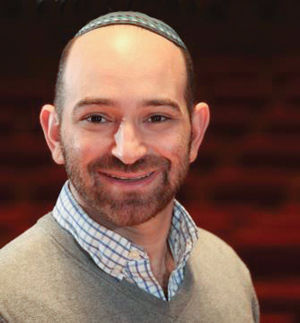Dressing for self-identity success
Published March 9, 2016
When I was in elementary school, I had a classmate who wore a shirt and tie to school every day. Although I remember his distinctive wardrobe choice decades later, I never spent much time thinking about his motives. Looking back, it would seem this was one way he expressed his identity. Clothing plays an important role in our society beyond its utilitarian purpose. Clothing can be an important avenue for self-expression and also help to signify a particular role.
Rabbi Marc Margolius points out that throughout Genesis, however, clothing serves as a means of antagonism and deception. Jacob dons Esau’s clothes to deceive Isaac; Joseph’s many-colored tunic spurs envy among his brothers, who later dip it in blood to mislead Jacob; and Joseph hides his identity from his brothers by wearing Egyptian attire when they come to Egypt. But then, Rabbi Margolius teaches, the description of the clothing Aaron and the priests wore for their service in the sanctuary makes a significant departure from the way clothing had been previously understood in the Torah.
Pekudei describes the special garments made with blue, purple and crimson yarns that helped to distinguish those officiating in the sanctuary. As high priest, Aaron’s sacral vestments included a breastplate with 12 stones corresponding to the names of the 12 tribes of Israel. These 12 stones on Aaron’s breastplate symbolized his responsibility to serve as a religious leader for the entire Israelite community. The presence of the stones representing each tribe promoted a sense of inclusivity. In this way, the breastplate was a reminder to all who saw it that the high priest’s religious authority included all 12 tribes.
Not only was the breastplate a symbol to others of the high priest’s role, it also reminded the high priest of his personal responsibility. Each time he put it on served as a notice to him of his responsibility to serve the entire community. In this way the breastplate prompted the high priest to reflect on his duty to all 12 tribes.
Today clothing plays a similar role. Uniforms denote professional responsibilities to others or signify membership in a group. Clothing is also used to make political statements, show support for causes and teams or articulate one’s identity. Our parashah calls us to reflect on the messages communicated to others by what we wear. It also calls us to consider how clothing can help remind us of who we are and our role in the world. Clothing choices can promote a healthy sense of self or foster insecurity. They can remind people of their values and responsibilities, like the clothing of the priests, or divert attention in other directions. While the cliché suggests that you are what you wear, our Torah portion seems to suggest another way of thinking: Perhaps when thinking about clothing, the goal should be to strive to wear garments that remind you of who you are.















